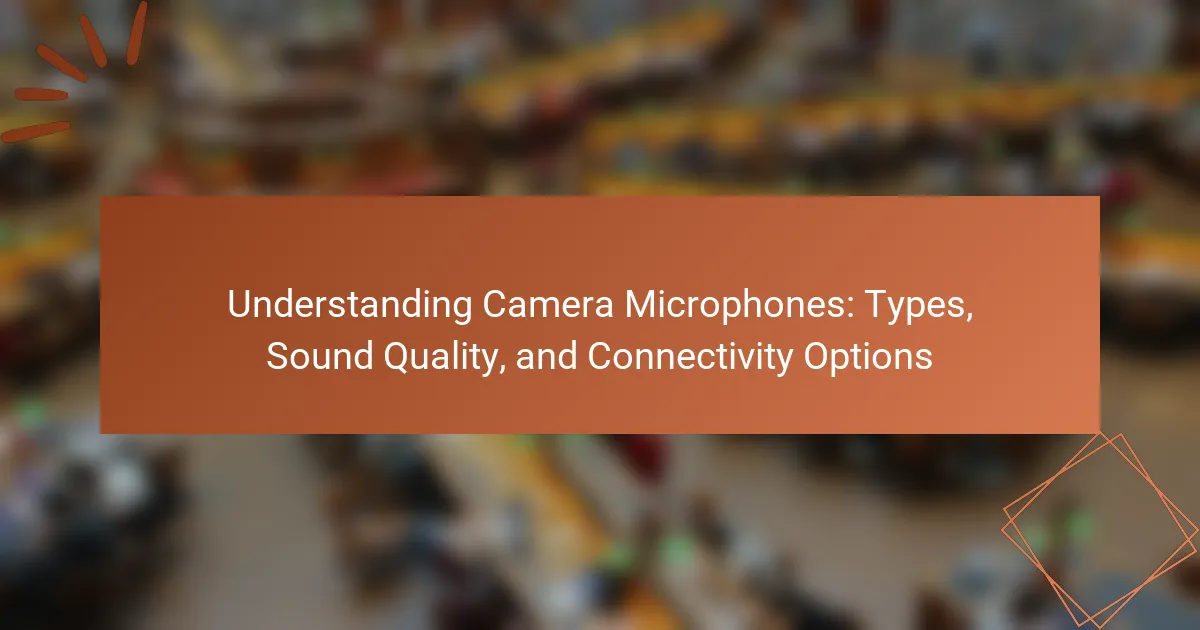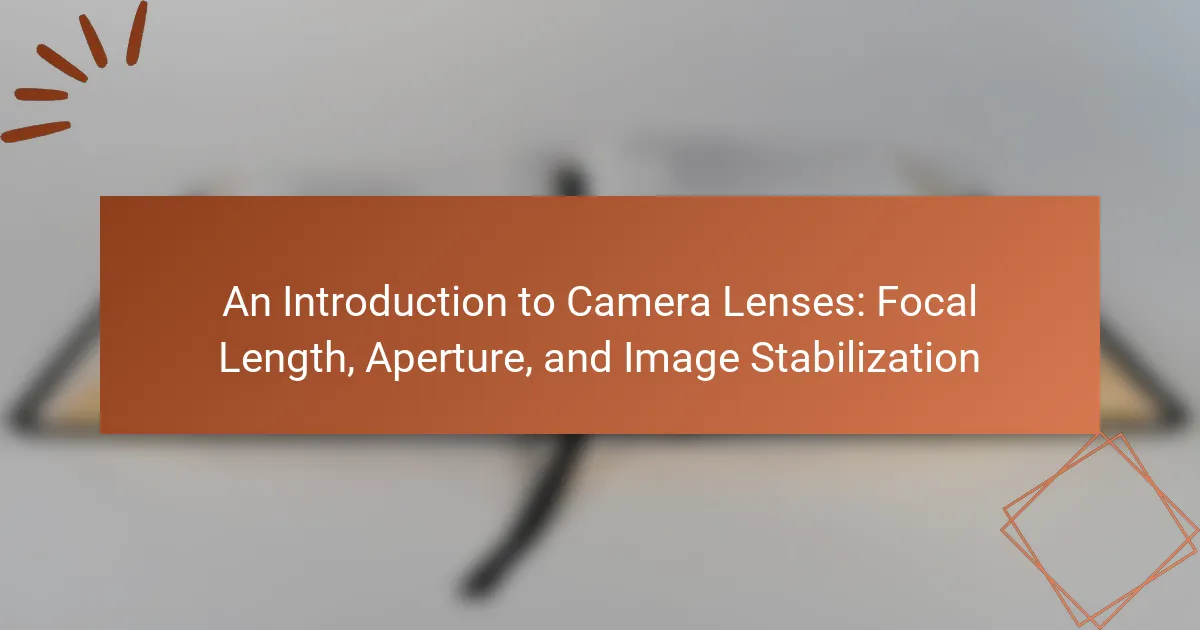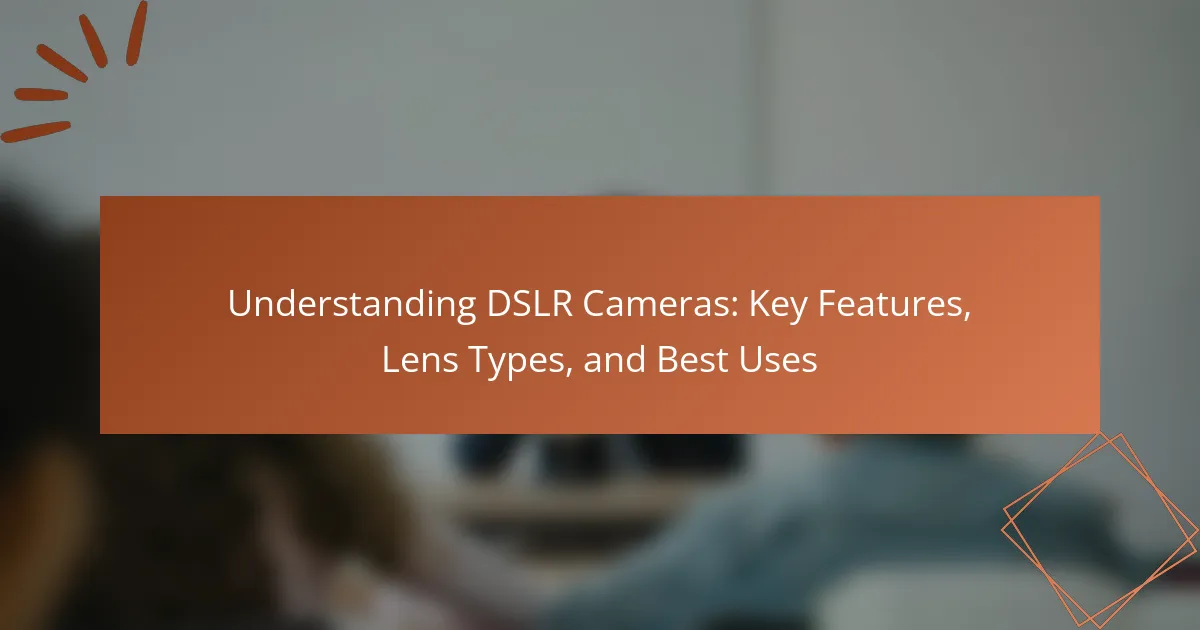Camera sensors are electronic devices that capture light to create images, converting light into electrical signals for digital photography. The article examines the critical aspects of camera sensors, including their size, resolution, and low-light performance, all of which significantly influence image quality. It highlights how larger sensors typically gather more light, enhancing performance in low-light conditions, while resolution determines the detail captured in images. Additionally, the article discusses the impact of sensor size on lens compatibility and overall camera design, emphasizing the importance of sensor quality in achieving optimal photographic results.
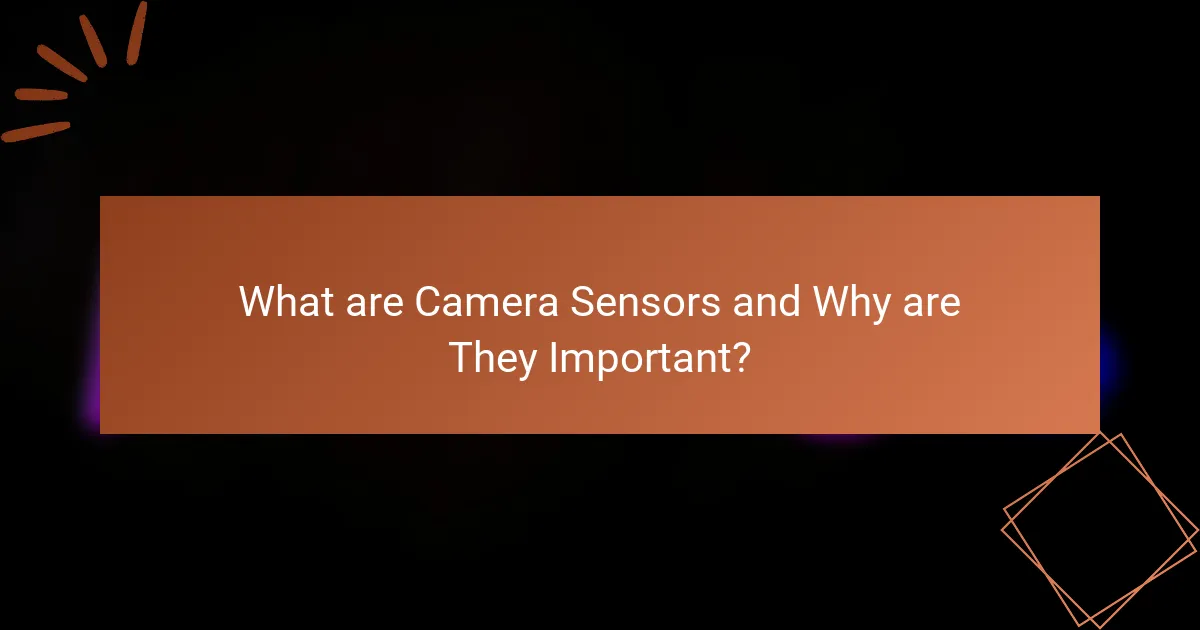
What are Camera Sensors and Why are They Important?
Camera sensors are electronic devices that capture light to create images. They convert light into electrical signals, which are then processed to produce digital photographs. The quality of a camera sensor significantly impacts image resolution, color accuracy, and low-light performance. Larger sensors typically gather more light, resulting in better image quality, especially in dim conditions. Additionally, sensors with higher resolutions can capture more detail in photographs. According to a study by DxOMark, sensor quality is a key factor in overall camera performance. This underscores the importance of camera sensors in photography and videography.
How do Camera Sensors Function?
Camera sensors convert light into electrical signals. They consist of millions of light-sensitive pixels. When light hits these pixels, it generates a small electrical charge. This charge varies based on the intensity of the light. The sensor then processes these charges into digital data. The data forms an image that can be displayed or stored. Different types of sensors include CCD and CMOS. Each type has unique advantages in terms of performance and power consumption.
What are the key components of a camera sensor?
The key components of a camera sensor include the photodiodes, color filters, and the readout circuitry. Photodiodes convert light into electrical signals. Each photodiode corresponds to a pixel in the final image. Color filters are used to capture different wavelengths of light. They are arranged in a Bayer filter pattern for color imaging. The readout circuitry processes the electrical signals from the photodiodes. This circuitry converts the signals into digital data for image processing. Additionally, the sensor’s size affects its light-gathering ability. Larger sensors typically perform better in low-light conditions.
How do these components influence image capture?
Camera sensor size, resolution, and low-light performance significantly influence image capture. A larger sensor size allows more light to be captured, resulting in better image quality. Higher resolution provides more detail in the image, enhancing clarity and sharpness. Low-light performance determines how well a camera can capture images in dim conditions. Sensors with better low-light capabilities produce less noise and maintain image quality in low-light environments. Studies show that larger sensors can improve dynamic range, allowing for better detail in highlights and shadows. High-resolution sensors offer the ability to crop images without losing detail. Overall, these components work together to enhance the overall image quality captured by a camera.
What Factors Influence Camera Sensor Performance?
Camera sensor performance is influenced by several key factors. These include sensor size, resolution, and pixel technology. Larger sensors typically capture more light, resulting in better image quality. Higher resolution increases detail but can also introduce noise. Pixel size plays a crucial role; larger pixels gather more light, enhancing low-light performance. Additionally, sensor design and the quality of the lens affect overall performance. Advanced technologies, like back-illuminated sensors, improve light capture efficiency. Environmental conditions, such as temperature and lighting, also impact sensor performance. Thus, these factors collectively determine the effectiveness of a camera sensor in various situations.
How does sensor size affect image quality?
Larger sensor sizes generally improve image quality. This is because larger sensors can capture more light, resulting in better exposure and detail. They also produce less noise, especially in low-light conditions. Additionally, larger sensors enhance dynamic range, allowing for greater detail in both shadows and highlights. For example, full-frame sensors perform better than crop sensors in capturing fine details and color accuracy. This relationship is supported by various studies showing that larger sensors yield superior image clarity and fidelity.
What role does resolution play in image clarity?
Resolution directly affects image clarity. Higher resolution means more pixels are captured in an image. More pixels lead to finer detail and sharper images. Clarity improves as resolution increases because details are less likely to be blurred. For example, a 12-megapixel image has more detail than a 2-megapixel image. This is especially noticeable when images are enlarged. Adequate resolution is essential for high-quality prints and displays. In summary, resolution is a key determinant of how clear and detailed an image appears.
How does low-light performance vary among sensors?
Low-light performance varies among sensors based on their size, pixel design, and technology. Larger sensors typically capture more light, resulting in better performance in dim conditions. For example, full-frame sensors outperform micro four-thirds sensors in low-light scenarios. Additionally, sensors with larger individual pixels can gather more light, enhancing image quality. Technologies such as back-illuminated (BSI) sensors improve light sensitivity, further boosting low-light performance. Research shows that BSI sensors can increase light capture by up to 60% compared to traditional designs. Thus, sensor characteristics significantly influence low-light capabilities.
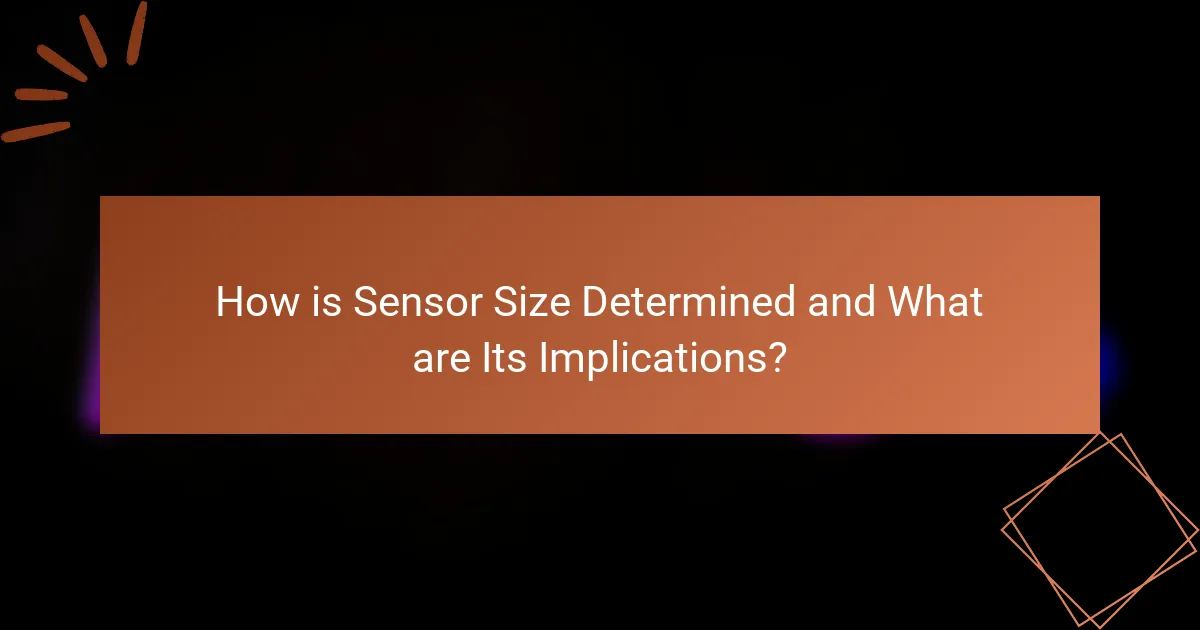
How is Sensor Size Determined and What are Its Implications?
Sensor size is determined by the physical dimensions of the sensor chip within a camera. This size is typically measured diagonally in millimeters. Common sizes include full-frame (35mm), APS-C, and Micro Four Thirds. Larger sensors capture more light, which improves image quality, especially in low-light conditions. They also provide a shallower depth of field, allowing for better subject isolation. Conversely, smaller sensors can lead to increased noise in images and reduced dynamic range. The choice of sensor size impacts lens compatibility and overall camera design. Research shows that sensor size significantly influences the performance characteristics of digital cameras.
What are the different sizes of camera sensors?
Camera sensors come in various sizes, each affecting image quality and performance. The most common sizes include Full Frame, APS-C, Micro Four Thirds, and 1-inch sensors. Full Frame sensors measure approximately 36mm x 24mm. APS-C sensors are typically around 22mm x 15mm. Micro Four Thirds sensors measure about 17mm x 13mm. 1-inch sensors are approximately 13.2mm x 8.8mm. Each size has distinct characteristics that influence depth of field, low-light performance, and field of view. Full Frame sensors generally offer superior image quality due to their larger size. APS-C sensors provide a good balance between size and performance. Micro Four Thirds sensors are compact, making them suitable for smaller cameras. 1-inch sensors are often found in premium compact cameras, delivering good performance in a small form factor.
What are the advantages of larger sensors?
Larger sensors provide improved image quality due to their ability to capture more light. This results in better dynamic range and reduced noise in images. Larger sensors also offer enhanced low-light performance, allowing for clearer photos in dim conditions. They typically produce images with greater detail and resolution. Additionally, larger sensors enable a shallower depth of field. This allows for more creative control over focus and background blur. Overall, larger sensors contribute to higher overall image fidelity and versatility in photography.
How do smaller sensors impact image quality?
Smaller sensors generally produce lower image quality compared to larger sensors. This is due to their reduced light-gathering capability. Smaller sensors often result in increased noise in low-light conditions. Additionally, they may struggle with dynamic range, leading to less detail in highlights and shadows. Depth of field can also be affected, with smaller sensors producing a greater depth of field. This limits creative control over focus. According to a study by DxOMark, larger sensors outperform smaller ones in terms of overall image quality metrics. Therefore, smaller sensors typically impact image quality negatively in various aspects.
How does sensor size affect lens compatibility?
Sensor size significantly affects lens compatibility by determining the field of view and crop factor. Larger sensors typically allow for a wider field of view with compatible lenses. For example, a full-frame sensor provides a wider perspective compared to an APS-C sensor using the same lens. This difference is due to the crop factor, which multiplies the effective focal length of the lens on smaller sensors.
Additionally, certain lenses designed for full-frame cameras may not be compatible with smaller sensors due to vignetting. Vignetting occurs when the lens’s image circle is smaller than the sensor, leading to dark corners in images. Therefore, understanding sensor size is crucial for selecting compatible lenses that deliver optimal performance.
What types of lenses are suitable for various sensor sizes?
Full-frame sensors require lenses designed for 35mm format. These lenses provide optimal image quality and coverage. APS-C sensors use crop-factor lenses, typically 1.5x crop, which are smaller and lighter. Micro Four Thirds sensors utilize specific lenses designed for their 2x crop factor. Each lens type matches the sensor size to avoid vignetting and distortion. Using the wrong lens can lead to compromised image quality. Therefore, selecting the appropriate lens is crucial for achieving the best results.
How does sensor size influence depth of field?
Larger sensor sizes result in a shallower depth of field. This occurs because a larger sensor captures more light and creates a wider aperture effect. Consequently, the area in focus is reduced, leading to more pronounced background blur.
In contrast, smaller sensors produce a deeper depth of field. This is due to their ability to use smaller apertures, which increases the range of distances that remain in focus.
For example, full-frame sensors typically have a shallower depth of field compared to crop sensors at the same aperture setting. This effect is crucial for photographers aiming for specific artistic outcomes, such as portraiture or landscape photography.
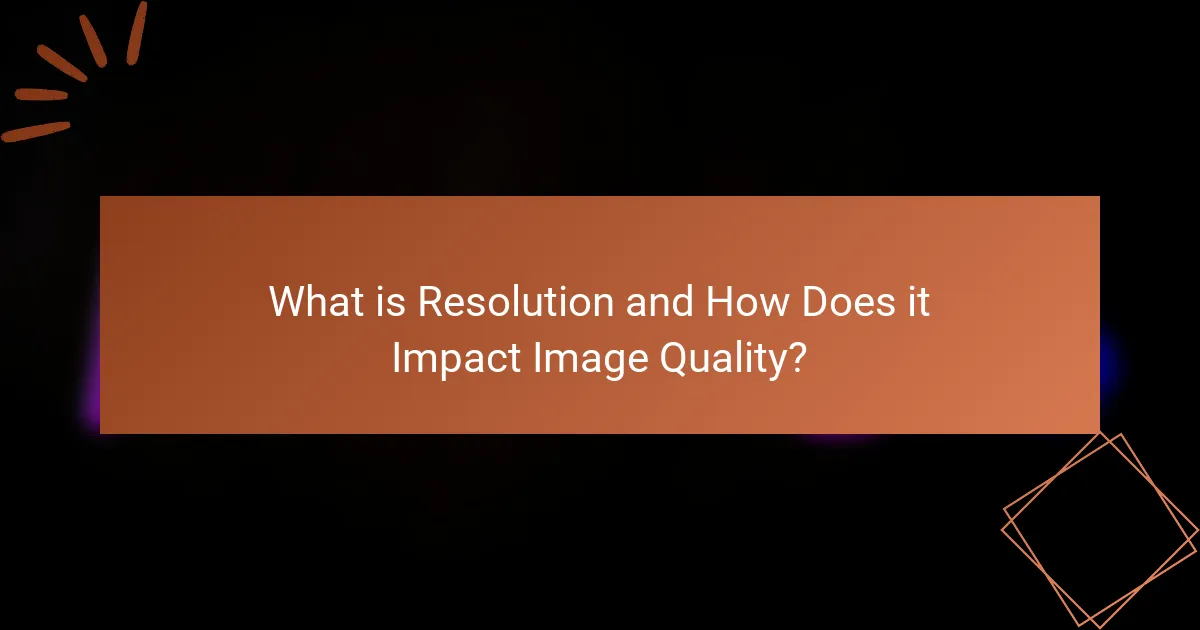
What is Resolution and How Does it Impact Image Quality?
Resolution refers to the amount of detail an image holds, typically measured in pixels. Higher resolution means more pixels, which generally leads to sharper images. Image quality is impacted by resolution because more pixels allow for finer details to be captured. For example, a 12-megapixel image can capture more detail than a 3-megapixel image. When images are enlarged, higher resolution images maintain clarity better than lower resolution ones. Resolution also affects how images appear on different devices. Screens with higher pixel density display images more accurately. Therefore, resolution is a critical factor in determining the overall quality of an image.
What does resolution mean in the context of camera sensors?
Resolution in the context of camera sensors refers to the amount of detail an image can hold. It is typically measured in pixels, representing the width and height of the image. Higher resolution means more pixels, resulting in finer detail. For example, a 12-megapixel sensor can capture images with a resolution of approximately 4000 x 3000 pixels. This allows for larger prints and more cropping flexibility without losing image quality. Resolution directly impacts the clarity and sharpness of the final image. Therefore, it is a critical specification for photographers when choosing a camera.
How is resolution measured in camera sensors?
Resolution in camera sensors is measured in pixels. It is defined by the total number of pixels that make up the sensor’s image. More pixels generally indicate higher resolution. For example, a sensor with 20 megapixels has 20 million pixels. This pixel count influences the level of detail captured in images. Higher pixel counts allow for larger prints without loss of quality. Additionally, resolution can be expressed in dimensions, such as width by height in pixels. For instance, a 4000 x 3000 pixel sensor has a resolution of 12 megapixels.
What is the relationship between resolution and detail in images?
Resolution directly affects the detail in images. Higher resolution means more pixels are present in an image. More pixels allow for finer details to be captured and displayed. For example, a 24-megapixel image can show more intricate textures than a 12-megapixel image. The detail becomes clearer and sharper with increased resolution. This relationship is crucial for applications like printing and digital displays. In printing, higher resolution images produce sharper prints without visible pixelation. Thus, resolution is a key factor in determining the level of detail in an image.
How does resolution affect post-processing options?
Higher resolution images provide more detail for post-processing options. Increased pixel count allows for greater cropping flexibility without losing image quality. This enables adjustments to composition and framing. Higher resolution also enhances the ability to apply detailed edits, such as sharpening and noise reduction. These edits can be more effective because there is more data to work with. For example, a 24 MP image retains detail better than a 12 MP image when enlarged. Additionally, higher resolution images support advanced techniques like HDR blending and detailed retouching. Overall, resolution significantly expands the range of post-processing possibilities.
What are the implications of high resolution for cropping images?
High resolution in images allows for significant cropping while maintaining detail. When an image has a high pixel count, it retains more information even after parts of the image are removed. This means that cropped images can still appear sharp and clear. For example, a 20-megapixel image can be cropped substantially without losing quality. In contrast, low-resolution images may become pixelated or blurry when cropped. High resolution thus provides flexibility in composition and framing during post-processing. This is crucial for professional photography and printing, where detail retention is essential.
How does resolution influence printing quality?
Resolution directly influences printing quality by determining the level of detail in the printed image. Higher resolution results in more pixels per inch (PPI), which enhances clarity and sharpness. For example, a resolution of 300 PPI is often considered optimal for high-quality prints. This level allows for finer details and smoother gradients in color. Conversely, lower resolutions, such as 72 PPI, can lead to pixelation and a lack of detail. Studies show that images printed at higher resolutions maintain their quality even when enlarged. Therefore, resolution is crucial for achieving professional-grade prints with accurate representation of the original image.
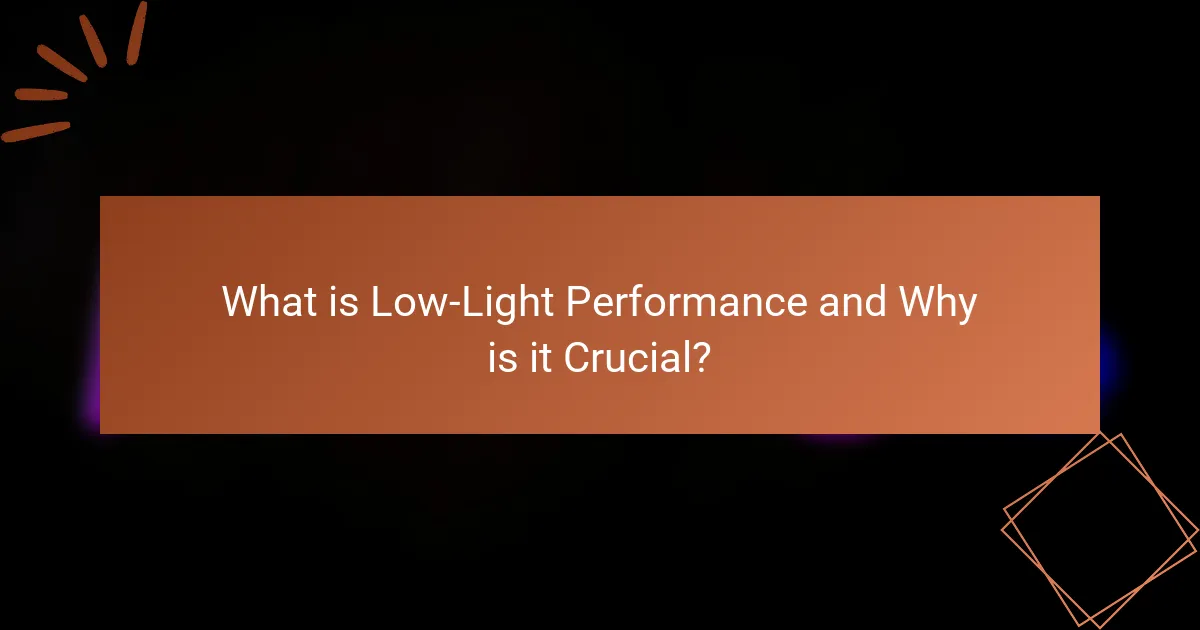
What is Low-Light Performance and Why is it Crucial?
Low-light performance refers to a camera’s ability to capture clear images in low-light conditions. It is crucial because many photography scenarios occur in dim environments, such as indoor events or nighttime scenes. Cameras with superior low-light performance produce images with less noise and improved detail in shadows. This capability often relies on sensor size and technology. Larger sensors typically gather more light, enhancing performance. Additionally, advanced noise reduction algorithms contribute to better results in low-light situations. For instance, cameras with a full-frame sensor often outperform those with smaller sensors in low-light photography.
How is low-light performance evaluated in camera sensors?
Low-light performance in camera sensors is evaluated through several key metrics. These include sensitivity, noise levels, and dynamic range. Sensitivity refers to the sensor’s ability to capture light, often measured in ISO values. Higher ISO values indicate better low-light performance. Noise levels assess the amount of grain or distortion in images taken in low light. Lower noise levels result in clearer images. Dynamic range measures the sensor’s ability to capture details in both shadows and highlights. A wider dynamic range enhances low-light performance by preserving detail in dark areas. Testing is often conducted in controlled environments with varying light conditions to ensure accuracy.
What factors contribute to better low-light performance?
Larger sensor size contributes to better low-light performance. A larger sensor can capture more light, resulting in improved image quality. Higher pixel sensitivity enhances the sensor’s ability to detect light in dim conditions. Advanced noise reduction algorithms further improve image clarity in low-light scenarios. Additionally, wider aperture lenses allow more light to reach the sensor, enhancing performance. The use of fast lenses with low f-stop values significantly boosts low-light capabilities. Finally, effective image stabilization reduces motion blur, improving overall image quality in low-light settings.
How does sensor size impact low-light capabilities?
Larger sensor sizes improve low-light capabilities in cameras. They can capture more light due to increased surface area. This leads to better image quality in dim conditions. Larger sensors also have larger individual pixels, which enhances light sensitivity. For example, full-frame sensors outperform crop sensors in low-light scenarios. A study by DxOMark shows that cameras with larger sensors score higher in low-light performance tests. This relationship is crucial for photographers needing reliable performance in challenging lighting.
What technologies enhance low-light performance?
Technologies that enhance low-light performance include larger sensor sizes, improved pixel technology, and advanced image processing algorithms. Larger sensors capture more light, resulting in better image quality in low-light conditions. Improved pixel technology, such as back-illuminated (BSI) sensors, allows for greater light sensitivity. Advanced image processing algorithms, like noise reduction techniques, further enhance image clarity in dim environments. These technologies collectively contribute to superior low-light performance in modern cameras.
How do advancements in sensor technology improve low-light imaging?
Advancements in sensor technology significantly enhance low-light imaging capabilities. Modern sensors utilize larger pixel sizes, which capture more light. This increased light sensitivity leads to improved image quality in dim conditions. Additionally, technologies such as back-illuminated sensors (BSI) optimize light collection by positioning circuitry behind the photodiodes.
Furthermore, advancements in noise reduction algorithms minimize graininess in low-light images. Sensors with higher dynamic range can better capture details in both shadows and highlights. For example, Sony’s Exmor R sensor technology has shown marked improvements in low-light performance, allowing for clearer images at ISO levels above 3200. These innovations collectively contribute to superior low-light imaging in contemporary cameras.
What are the limitations of low-light performance in different sensors?
Low-light performance in different sensors is limited by factors such as sensor size, pixel size, and noise levels. Smaller sensors typically capture less light, resulting in poorer performance in low-light conditions. For instance, smartphone sensors often have smaller pixels, which can lead to increased noise and reduced image quality. Larger sensors, like those in DSLRs, can gather more light, improving low-light capabilities. However, even larger sensors can struggle with noise if the pixel density is high. Additionally, sensor technology, such as back-illuminated sensors, can enhance low-light performance but may not eliminate limitations entirely. Overall, the interplay between sensor size, pixel characteristics, and technology defines the low-light performance of various sensors.
What are Best Practices for Choosing a Camera Sensor?
Choose a camera sensor based on size, resolution, and low-light performance. Sensor size affects image quality and depth of field. Larger sensors typically produce better images, especially in low light. Resolution determines the amount of detail captured. Higher resolution allows for larger prints and cropping flexibility. Low-light performance is crucial for night photography. Look for sensors with larger pixels, as they gather more light. Research sensor types, such as CMOS and CCD, for their specific strengths. Read reviews and comparisons to understand real-world performance. Consider your photography style and needs when selecting a sensor.
How do I select the right camera sensor for my needs?
To select the right camera sensor for your needs, consider three key factors: sensor size, resolution, and low-light performance. Sensor size affects image quality; larger sensors typically capture more light and detail. For resolution, higher megapixels provide more detail but require more storage and processing power. Low-light performance is crucial for shooting in dim conditions; larger sensors and advanced technology improve this capability. Research shows that full-frame sensors excel in low-light scenarios compared to crop sensors. Evaluate your shooting style and conditions to make an informed choice.
Camera sensors are essential electronic devices that capture light to create images, significantly influencing image quality through size, resolution, and low-light performance. This article explores the functionality of camera sensors, detailing their key components, how these components affect image capture, and the factors that influence sensor performance. It also examines the implications of sensor size on image quality, lens compatibility, and depth of field, while discussing the importance of resolution and low-light capabilities in photography. Additionally, best practices for selecting the appropriate camera sensor based on individual photography needs are provided, ensuring readers understand the critical aspects of camera sensor technology.
